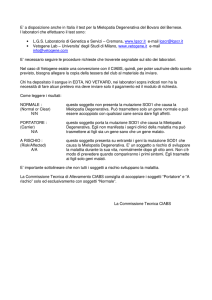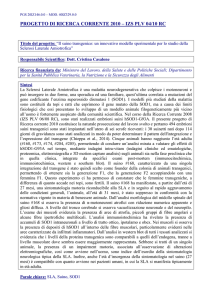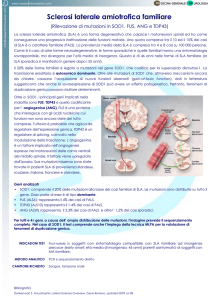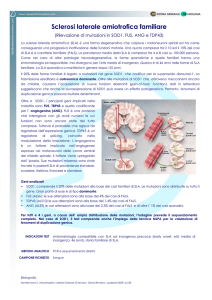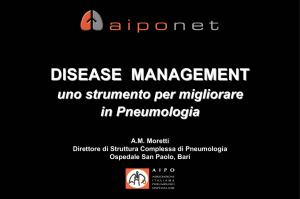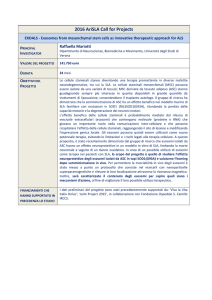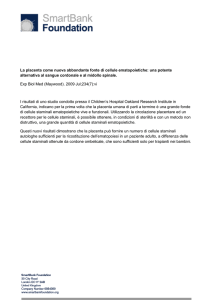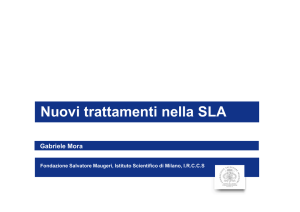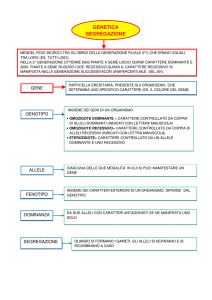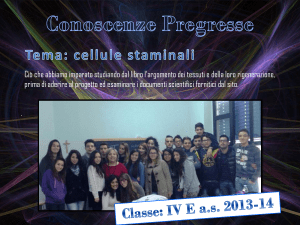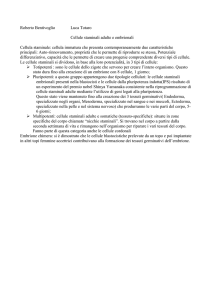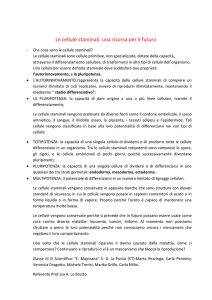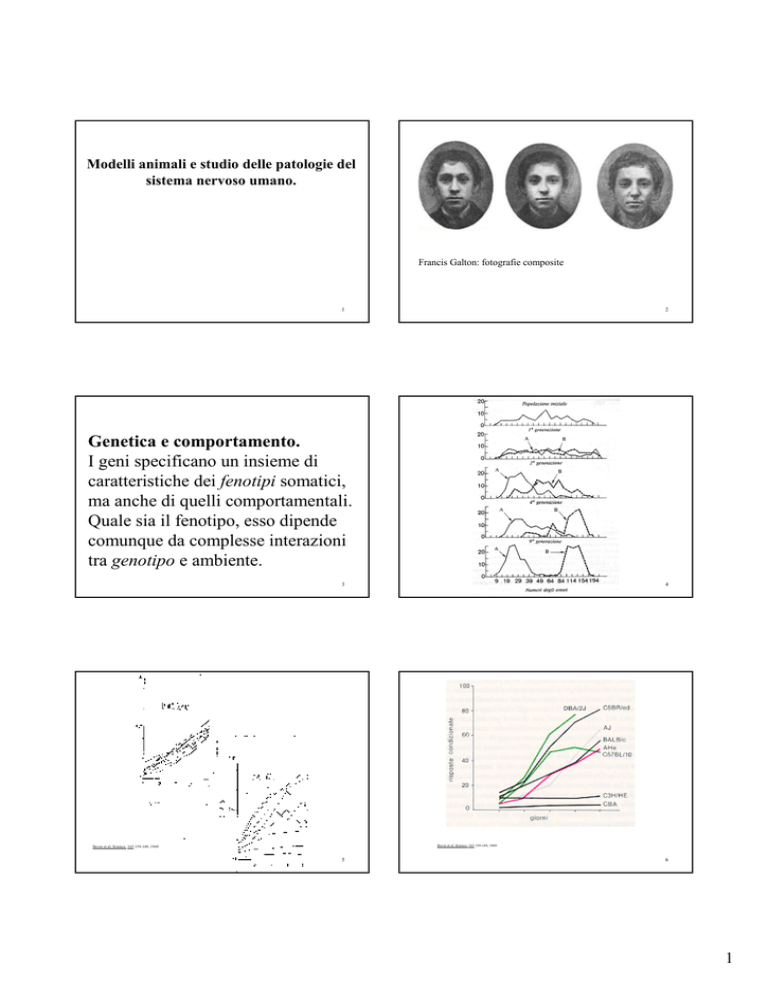
Modelli animali e studio delle patologie del
sistema nervoso umano.
Francis Galton: fotografie composite
1
2
Genetica e comportamento.
I geni specificano un insieme di
caratteristiche dei fenotipi somatici,
ma anche di quelli comportamentali.
Quale sia il fenotipo, esso dipende
comunque da complesse interazioni
tra genotipo e ambiente.
3
4
Bovet et al. Science, 163 139-149, 1969
Bovet et al. Science, 163 139-149, 1969
5
6
1
I primi studi gemellari
7
Differenze nella quantità di grigia nelle arre frontali, sensorimotorie e di Wernicke in
gemelli MZ e DZ
Thompson P.M., Cannon T.D., Narr K.L., van Erp T., Poutanen V.P., Huttunen M., Lönnqvist J., Standertskjöld-Nordenstam C.J., Kaprio J., Khaledy N.M.,
9
Dail R., Zoumalan C.I. e Toga A. W. Genetic influences on brain structure. Nature Neuroscienze, 5 November 2001, DOI: 10.1038/nn758
L’approccio genetico alle
malattie del sistema nervoso
Erlenmeyer Kimling & Jarvik Science 1963
8
Correlazioni nella distribuzione della grigia in gemelli MZ e DZ
Thompson P.M., Cannon T.D., Narr K.L., van Erp T., Poutanen V.P., Huttunen M., Lönnqvist J., Standertskjöld-Nordenstam C.J., Kaprio J., Khaledy N.M.,
Dail R., Zoumalan C.I. e Toga A. W. Genetic influences on brain structure. Nature Neuroscienze, 5 November 2001, DOI: 10.1038/nn758
10
Classification
• 3 groups of genetic diseases
• 1. Disorders with multifactorial inheritance
(polygenic)
• 2. Monogenic (mendelian) disorders
• 3. Chromosomal aberrations
Nella specie umana vi sono
numerose malattie genetiche che
comportano alterazioni del sistema
nervoso e del comportamento.
11
12
2
ALCUNE MALATTIE GENETICHE UMANE
Carattere
Modalità di trasmissione
Lobo dell'orecchio Autosoma recessivo
Anemia falciforme Autosoma recessivo
Galattosemia
Autosoma recessivo
Fenilchetonuria
Autosoma recessivo
Morbo di Tay-Sachs Autosoma recessivo
Daltonismo
Recessivo, legato al sesso
Distrofia muscolare
di Duchenne
Recessivo, legato al sesso
Emofilia
Recessivo, legato al sesso
Efelidi
Autosoma dominante
M. di Huntington
Autosoma dominante
Retinoblastoma
Autosoma dominante
Effetti sull'efficienza relativa
Nessuno evidente
Letali
Letali
Ritardo mentale, riduzione della longevità
Degen. e morte dei motoneuroni
Nessuno evidente
Modelli animali di malattie del
sistema nervoso su base
genetica.
Letali
Emorragie incontrollabili, spesso fatali
Nessuno evidente
Si esprime dopo l'età riproduttiva
Tumori oculari, di solito fatali
13
Modelli per le basi genetiche di un tratto
14
Modelli Animali
• Indicano che il comportamento dipende
da fattori genetici
• Sono state identificate le basi molecolari
degli effetti di un singolo gene su
• Esempi
–Open-field nel topo
–Animali Transgenici
15
Malattie genetiche
• Ereditarie – non sempre tramite genetica
classica
Non sempre tramite DNA (gene silencing)
• Specie specifiche
• Tramite linea germinale (progerie,
disordini neurodegenerativi, sindrome di Down
, altri tumori).
etc.) o acquisiti (LMC
Differenze cellulari (moltiplic. o a riposo)
• In organismi multicellulari complessi
–leucemia mielogena cronica-
17
16
Malattie neurodegenerative
• Sono progressive e comportano una
perdita fatale di funzioni nervose
• Sono stati identificati singoli geni per
–Huntington
–Atassia Spinocerebellare
• Esempi di tratti complessi:
–Alzheimer
– Sclerosi laterale amiotrofica (ALS)
– Parkinson
18
3
Aspetti relativi agli animali
• Differenze fondamentali con gli umani
– Quantità (raccolta del campione)
– Durata vita media
– Regolazione dell’espressione genica
– Proteine codificate dai geni
– Sistemi immunitari
– Assorbimento, distribuzione, metabolismo e
eliminazione dei farmaci.
Differenze e somiglianze
filogenetiche
19
Somiglianze e differenze
20
Somiglianze e differenze
21
22
Differenze
Analogie e omologie
Dalla fisiologia alla neuropatologia
23
24
4
Circuiti canori: Zebra finch Teniopigia, estrilidi)
Le chimere
Produrre animali con caratteri umani
Circuiti linguaggio
25
Perché creare chimere animale/uomo
usando cellule staminali?
26
In che fase dello sviluppo si possono trapiantare staminali
umane embrionali??
Topo
-Per esplorare il potenziale di differenziamento delle
staminali umane in tessuti animali
-Per testare la sopravvivenza delle staminali umane e la loro
integrazione funzionale dopo il trapianto in modelli animali di
malattie
-Per generare topi “umanizzati” che possano essere testati in
termini di rigetto di staminali umane trapiantate.
-Per generare topi “umanizzati” con organi su cui testare
nuovi farmaci (tossicità e efficacia).
“Trapianto di hES in
blastocisti non umane
(scimmie escluse)
solo in circostanze in cui
questa informazione è
essenziale ”
“Trapianto di cellule hES in feti non umani
Solleva problemi specifici.
Il cervello dovrebbe essere il punto centrale”.
Le cellule hES assumono un fenotipo murino?
Le cellule hES generano tutti gli strati germinali?
27
28
Generazione di chimere topo/umano: Capacità delle
staminali di ridurre l’apotosi nel Parkinson
Nature Biotechnology 16, 1040 - 1044 (1998)
Chimeric brains generated by intraventricular transplantation of
fetal human brain cells into embryonic rats
Oliver Brüstle, Khalid Choudhary, Khalad Karram, Anita Hüttner, Kerren
Murray, Monique Dubois-Dalcq & Ronald D.G. McKay
Staminali
Fetali umane
Behrstock et al, Gene Therapy 2006
29
30
5
Altri studi transgenici
• Studi in Drosophila
• Mosche portatrici del gene umano per HD
o per l’atassia cerebellare 3
– Dimostrano che le proteine mutanti
distruggono i neuroni
– Identificazione dei geni o sostanze che
rallentano o provengono la morte cellulare
L’approccio transgenico
31
32
Perdita neuronale in topi transgenici per l’Huntington
Gene SOD1
•10% di tutti i casi di SLA sono ereditati come
autosomico dominante
•In alcune di queste persone c’è una mutazione del
gene SOD1
•La mutazione induce una tossicità della proteina
SOD1 nei confronti dei neuroni
•Topi transgenici con un gene mutante SOD1
sviluppano atonia muscolare simile a quella delle
persone affette da SLA
a) Striato normale
b) Striato di un topo HD89
Chapter 18 Human Heredity by Michael Cummings ©2006 Brooks/Cole-Thomson Learning
33
34
In 2000, Mel Feany and Welcome Bender published
a landmark paper, reporting a Drosophila model of
Parkinson’s Disease.
Studi sulla drosophila
This paper:
reported the most accurate animal model of PD to date.
age-related neurodegeneration specific to dopaminergic cells
Produced histological hallmarks of PD that had never been observed in vertebrates
Subsequent investigators built on this model:
PD Flies on clinically relevant drugs responded in ways similar to human patients.
Responses were consistent with known dose-response curves
PD flies could be used to predict human pathology!
35
Within 6 years, Drosophila geneticists have generated models of
Huntington’s Disease
Prion/prion-like neurodegeneration
Fragile X Mental Retardation
Spinocerebellar Ataxia 1
Alzheimer’s Disease
And more than 20 others.
36
Alice Schmid, University of Utah,Eccles Institute of Human Genetics
6
Why are flies so amenable to models of human neurodegeneration?
Lo studio di un pathway
metabolico
Are these models valid?
How similar to humans ARE flies?
Are they useful in drug discovery?
How efficient are they for drug development,
as compared to cell-based assays?
37
Aging and Neurodegenerative Diseases: Models
and Assessment of the Impact and Responses to
ROS / RNS*
Kenneth Hensley
Free Radical Biology and Aging Research Program
Oklahoma Medical Research Foundation
38
Methods for studying oxidative stress with examples
From recent human and animal studies
What animal models are beginning to tell us
about the relationship of oxidative stress
to neuroinflammation
*(specie radicaliche dell’ossigeno (ROS) e dell’azoto (RNS)
39
Oxidative Damage in Neurological Disease
Implicated in:
rodent models:
Alzheimer’s disease (AD)
Several genetic models
e.g. Tg2576, APP/PS1 mice
Amyotrophic lateral sclerosis
(ALS, Lou Gherig’s disease)
G93A-SOD1, G85R SOD1,
other SOD1 mice; ALS2 mouse
peripherin mouse
Huntington’s disease
R6/2 mouse, 3-nitropropionate
Parkinson’s disease
MPTP induced lesions; LPSinduction models
Stroke
Gerbil, rat models for carotid
and MCAO occlusion
40
Alzheimer’s Disease
Characterized by amyloid protein deposition in
plaques and by intraneuronal inclusions of various
proteins (eg. hyperphosphorylated tau)
Glial activation around plaques, and associated
neuron damage / death
Region-specific accumulation of oxidative damage
that correlates with histopathology
41
42
7
Mouse models of AD partially reproduce the oxidative
damage aspect of the disease
Histopathology of AD: Plaques and Tangles
Histochemistry: anti-phospho-p38 / cresyl violet
Lim et al., J. Neurosci. 21: 8370-8377 (2001)
43
Oxidative damage in humans and animal
models of ALS
ALS is a fatal motor neuron disease causing death of
neurons in the spinal cord, brainstem and motor
cortex.
It is essentially untreatable (+6 month life extension
with the NMDA receptor antagonist riluzole).
Prognosis: Progressive paralysis followed by death in
3-5 years. Death is usually by pneumonia and near
complete paralysis.
44
ALS may be sporadic or familial
About 20 % of all ALS cases are heritable
Of these, 20-30% are caused by gain-of-toxic
Function mutations in Cu,Zn-SOD (SOD1)
[Deng et al. Science 20: 1047-1051 (1993)]
2O2 •– + 2 H+
SOD1
H2O2 + O2
SOD1 normally detoxifies ROS; it is unclear what is the toxic
gain-of-function associated with mutant SOD1.
45
Cu,Zn-Superoxide Dismutase (SOD1)
46
Why do mutant SOD1 enzymes
cause motor neuron disease?
SOD1 mutants have increased peroxidase activity and
convert H2O2 to •OH (Valentine and Bredesen 1996;
Yim et al. 1997)
Mutant SOD1 causes ALS-like disease in mice when ubiquitously
expressed (Pramatarova et al. 2001; Lino et al. 2002)
47
Mutant SOD1 lose metals easily. Metal deficient
enzymes promote protein nitration and render
neurons susceptible to apoptosis (Crow, Beckman et
al. 1997; Estevez et al. 1999)
SOD1 mutants aggregate inside neurons, contribute
to toxicity (Bruijn et al. 1998)
48
8
Transgenic mice expressing the G93A-SOD1
mutation develop ALS-like disease
Alternative Explanations
Maybe SOD1 mutants exert their
pathogenic effects through nonneuronal cells.
astrocytes
Neuroinflammation:
• ROS, RNS
• cytokines
• apoptosis initiators
• limited involvement
of lymphocytes
microglia
49
G93A-SOD1 mutant mice experience progressive
decline in motor function
50
Indicazioni metodologiche
rotarod times
% of baseline value
120
100
80
60
I database
40
20
0
40
60
80
100
120
140
age (days)
51
52
NCRR Comparative Medicine Biological Resources
Invertebrate Resources
• Bloomington Drosophila Stock Center
• Caenorhabditis Genetics Center
• National Resource for Aplysia
• National Resource for Cephalopods
Non-human Primate Resources
• National Primate Research Centers (8)
• Baboon and Monkey Research Resources (3)
• Chimpanzee Biomedical Research Resources (6)
• Specific-Pathogen-Free Macaque Resources (4)
Zebrafish International Resource Center
Rodent Resources
• Mutant Mouse Regional Resource Centers (4)
• Induced Mutant Resource
• Special Mouse Strains Resource
• Peromyscus Genetic Stock Center
• Rat Resource and Research Center
• Transgenic Mice With Altered Calcium Handling
Resource
Biological Materials Resources
• Adult Mesenchymal Stem Cell Resource
• National Cell Culture Center
• National Stem Cell Resource
• Viper Resource Center
• Yeast Genetic Stock Center
53
54
9

